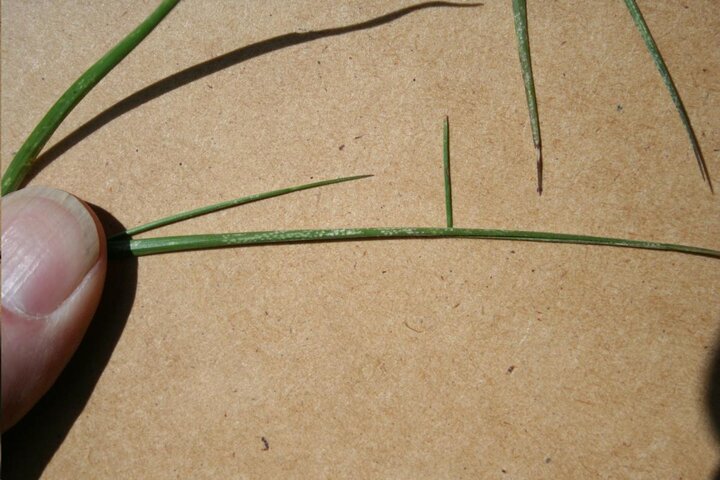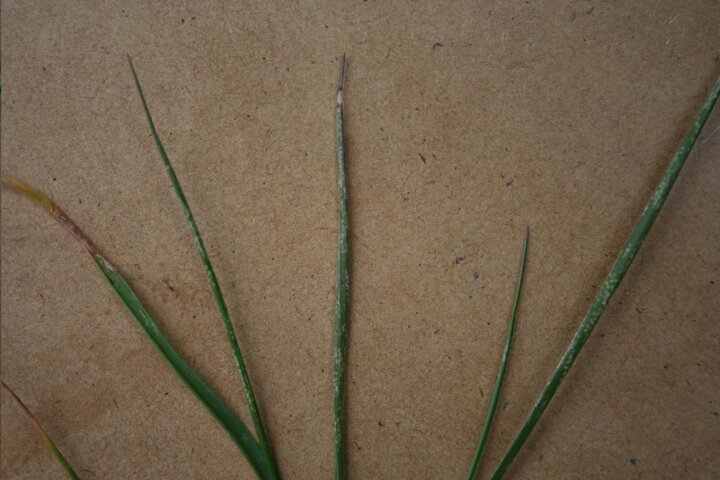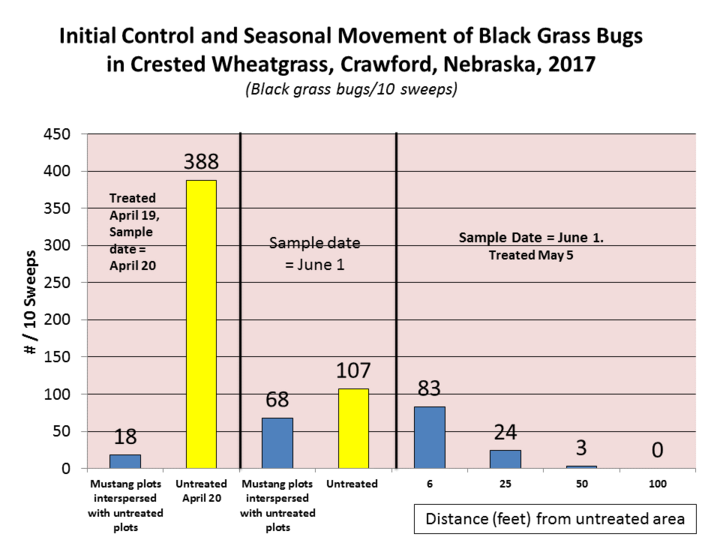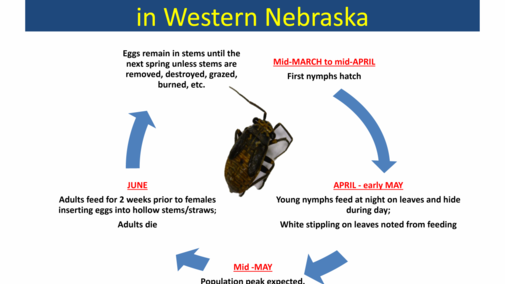In western Nebraska when wheatgrass, especially crested wheatgrass, starts growing, it’s time to begin monitoring for black grass bugs. Feeding damage caused by these insects can substantially reduce wheatgrass forage production.
Two genera of plant bugs are called black grass bugs: Irbisia and Labops. Two species of black grass bugs are typically encountered in western Nebraska. The predominant species is Labops hesperius (sometimes referenced as “wheatgrass bug”). Nymphs appear grayish against the soil, but under a microscope a “tiger-stripe” pattern can be seen on their heads. Adults are dark colored and have a buff
coloration along the outer wing covers. Adults of I. brachycera are solid black (except the legs). Life cycles for both species are very similar (Figure 1).
Hatching from the overwintering eggs is well timed with initial spring wheatgrass growth. Finding feeding damage from black grass bugs is easier than finding the actual nymphs as nymphs are small and are on the leaves at night and near the soil surface during the day. Feeding damage occurs when black grass bugs pierce the leaf and suck out the cell contents, leaving whitish spots (Figure 2). Usually the feeding begins at the leaf tip and proceeds down the leaf (Figure 3).
Fields at highest risk are those that had infestations the previous year and had dried growth in June when eggs are deposited. Adult black grass bugs use “grass straws” (dried out, standing hollow plant stems) but not green solid stems to lay eggs. Removal/prevention of straws by haying, intense grazing, and/or burning of chaff eliminates most sites that would be used by black grass bugs.
Bulbous bluegrass is also used as an oviposition site for black grass bugs. Because bulbous bluegrass matures much earlier in the year than crested wheatgrass, it can serve as an oviposition site that year as stems are hollow by June.
Black Grass Bug Management
Black grass bugs are fairly easy to control with insecticides; however, well-researched economic thresholds for black grass bugs do not exist. This is partially due to difficulty in scouting nymphs at night when they are actively feeding. This is also complicated by the fact that their activity is affected by air temperature and time after sunset.
Research conducted in 2017 in Sioux County noted an approximate 810 lb/ac hay yield increase when crested wheatgrass was treated with Mustang Maxx at the two green-collared leaf stage when 38. 8 black grass bugs per sweep were present. Leaves were already heavily damaged by black grass bug feeding at time of application. This particular field was also well fertilized, which allowed for higher yield potential. The early control was critical in this experiment for the yield increase, as differences for black grass bug numbers were not statistically different at harvest (Figure 4).
Previous research has noted that an insecticide application on an entire field may provide up to seven years of control, as black grass bug movement across fields is slow. In 2017 black grass bugs were noted to move less than 100 feet across a large treated field area from untreated areas (Figure 4). They did re-infest smaller treated areas that were intermixed with untreated crested wheatgrass (Figure 4).
The slow movement into and across a field is important for scouting and determining extent of infestation. Field edges would be expected to have much higher populations of black grass bugs and damage levels if the insects are moving from an adjacent area, such as grasses in road ditches.





